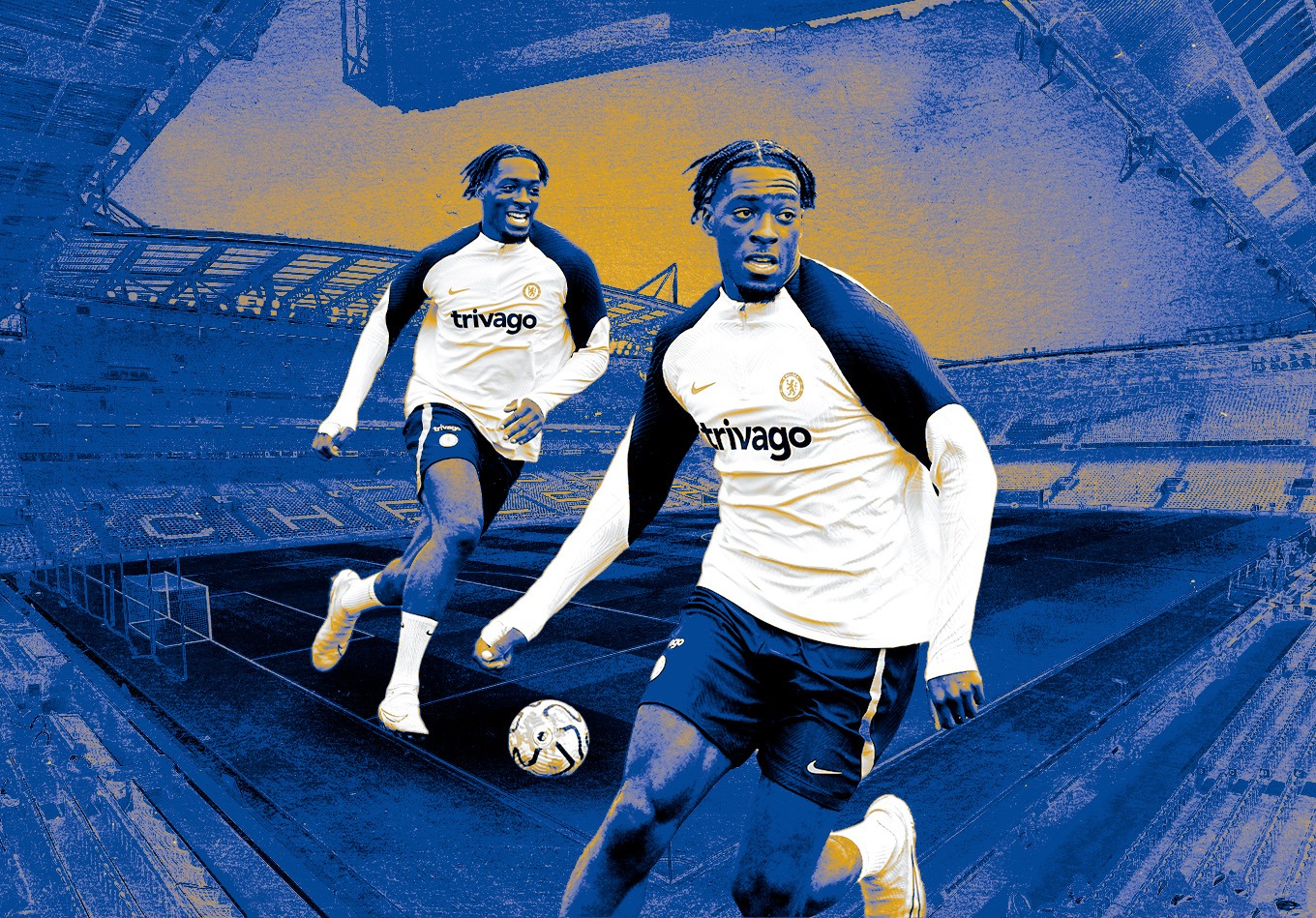Axel Disasi had been linked with several Premier League clubs before Chelsea made their move. Following confirmation of his transfer, we look at what he’ll bring to Stamford Bridge.
Monaco probably didn’t expect to lose two first-choice centre-backs to Chelsea in the same year, but since the 2022 takeover of Todd Boehly and his Clearlake consortium, it seems few clubs are safe from the Premier League club’s financial might.
Benoît Badiashile joined from Monaco in January and, almost exactly seven months on, Axel Disasi has taken the same route, signing a six-year contract at Stamford Bridge after reportedly costing about £39 million.
Disasi is the fourth centre-back to make the move to Chelsea since the Boehly era began, and that’s not including Levi Colwill, who’s expected to take on a prominent role this season after returning from a promising loan spell with Brighton.
It’s an area new head coach Mauricio Pochettino has plenty of options in, though the signing of Disasi was clearly necessary after Wesley Fofana – one of the other centre-backs brought in since Boehly’s arrival – suffered a serious knee ligament injury that will likely keep him out for most of the 2023-24 campaign.
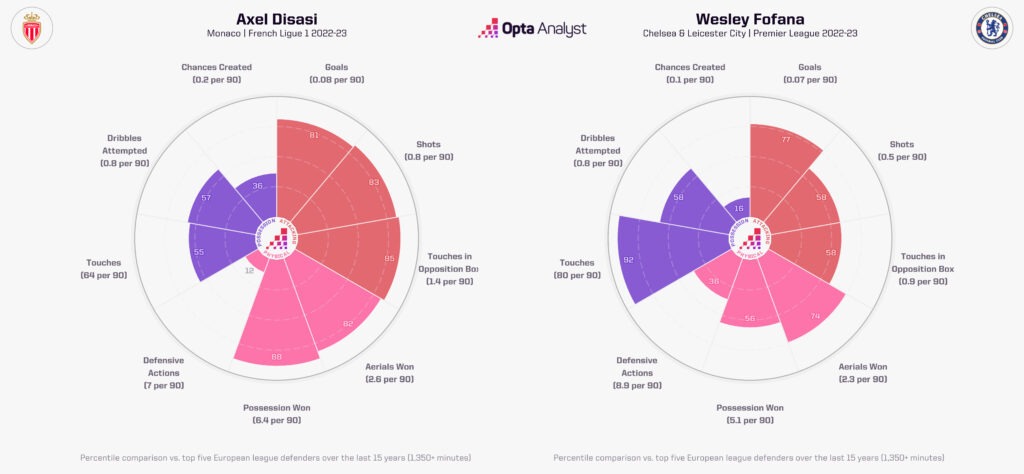
Disasi wouldn’t be considered a carbon copy of Fofana by any stretch of the imagination, but he does share some similar characteristics and stylistically appears to be a good fit for Chelsea and Pochettino, at least on the face of it.
A France international, who was even called into their World Cup squad last year ahead of Badiashile, Disasi should tick plenty of boxes with respect to his technical and physical attributes; a modern centre-back who possesses real strength and athleticism, he has plenty going for him as he attempts to adapt to the Premier League.
Of course, Chelsea represent something of an unknown quantity. The past 13-14 months or so have been very chaotic; new players have arrived left, right and centre, with more faces coming in just when those already there might be starting to gel. And let’s not forget, Pochettino is the fourth manager they’ve had in the past year after Thomas Tuchel, Graham Potter and Frank Lampard.
There’s no doubt many of the players they’ve signed have huge potential, but until now the upheaval has benefited few (if any) of them. The hierarchy will hope Pochettino is capable of getting them singing from the same hymn sheet; certainly, moulding young players at Tottenham was considered one of his greatest successes.
Disasi arguably doesn’t quite fall into the same category as the majority of the signings Chelsea have made under Boehly, however. There’s been a real focus on players aged 23 and under, whereas Disasi is almost an elder statesman by comparison at the age of 25. For Monaco and Reims, he has four full seasons of top-flight football under his belt and has even worn the captain’s armband.
In fact, he took to the field as captain within a few months of joining Monaco in 2020, with then-coach Niko Kovac appointing him vice-captain. Explaining that decision in November 2020, Kovac said: “I made my decision three months after arriving. Axel is an excellent young player who is developing, and who works very hard. He is also a strong individual with a lot of character. He is a leader who has many qualities. We are fortunate to have two quality central defenders with him and Benoît [Badiashile]. I know there are a lot of very good players in this role in France, but I think he is the future of the French team. He is counted on a lot and personally I believe in him a lot, and that’s why I’ve decided to trust in him.”
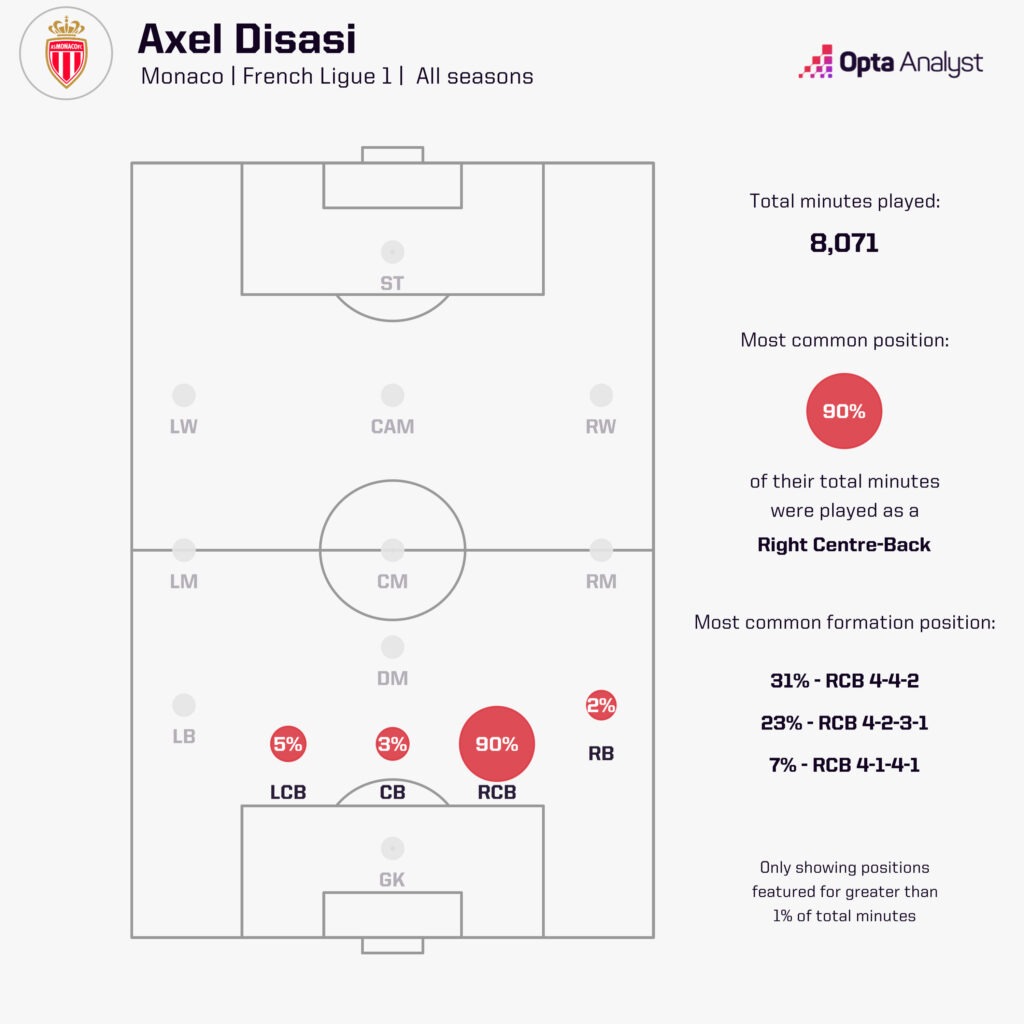
Disasi was barely out of the team ever since first joining Monaco, but he was most prominent last season; he made 38 Ligue 1 appearances, 37 of which were starts, and he was only taken off once. Given Fofana’s injury woes and the fact Thiago Silva will be 39 very soon, Disasi having a strong track record of being reliable in terms of fitness was surely seen as a major plus; he was available for all but five games across the 2020-21 and 2021-22 seasons as well prior to playing in every game in 2022-23.
Of course, there’s a degree of uncertainty around how Chelsea will play this season just because of how few players are genuinely established at the club, and moulding them into a particular style might take time, or not work at all. After all, Pochettino found it a challenge to sculpt his Paris Saint-Germain team.
Nevertheless, it’s perfectly reasonable to think he’ll have better luck at Chelsea because the squad is full of young players who should be easier to shape, rather than being littered with superstars like PSG were. So, we can expect Pochettino to make building from the back a key feature, and this should suit Disasi just fine.
Since establishing himself in the Reims starting XI in 2019-20, Disasi has built a reputation as one of France’s best ball-playing centre-backs, someone who can progress the ball effectively from his own half either through passing or carrying the ball upfield. But it wasn’t always like this; he’s had to work hard to improve himself.
“He’s the player who has grown the most since my arrival,” then-coach Philippe Clement said in November after Disasi was called up to France’s World Cup squad. “When I arrived at Monaco, I heard he had a lot of strength, but with the ball he was less good. However, in recent months he’s evolved a lot in this area, shown his qualities. He worked very hard, even after the sessions, to improve his individual level.”
The results have been impressive.
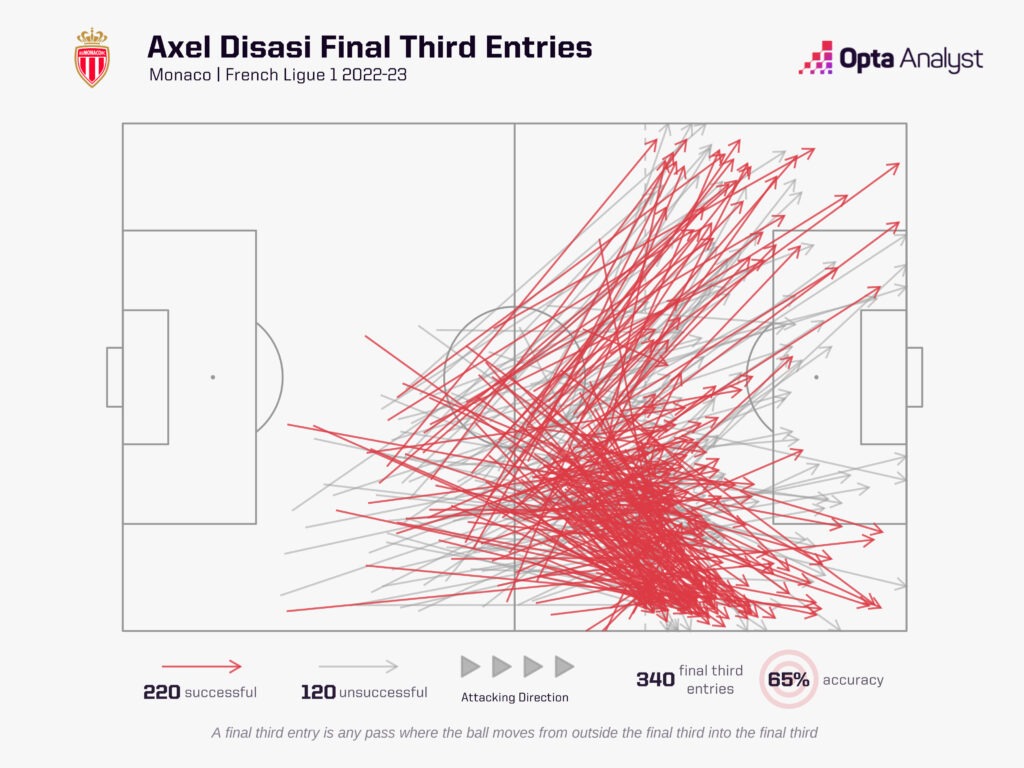
With respect to progression through distribution, Disasi played 422 passes into the attacking third in Ligue 1 last season, a figure bettered by just three defenders. Among the same group of players, he also ranked fourth for passes into the penalty area (45), though when crosses were excluded, he sat at the top of the pile (36). Perhaps unsurprisingly this also translated to Disasi’s progressive passes amounting to a distance of 3,217 metres, second only to Lens’ Jonathan Gradit among defenders.
He’s positive with his passing, frequently looking to get the ball forward and instigate transitions that get his team back on the attack, but Disasi arguably stands out even more in terms of his ability carrying the ball.
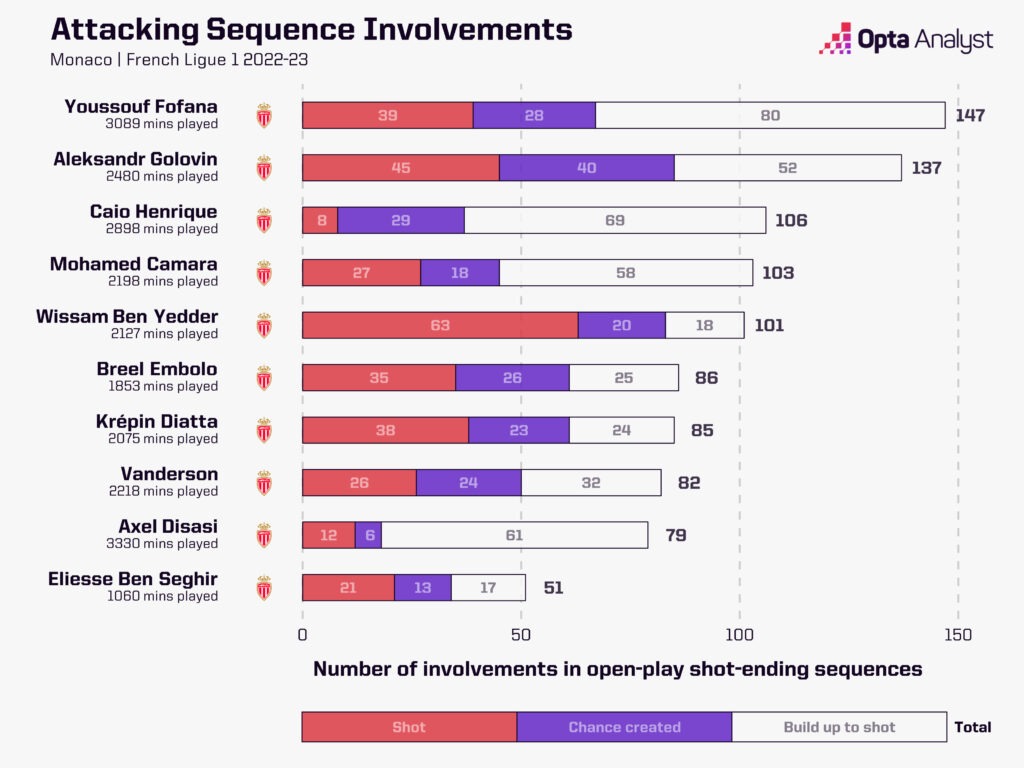
On average, he moved the ball 6.9 metres upfield per carry; that was the most of any centre-back to play at least 20 minutes over the season, while no central defenders who featured for at least 1,900 minutes recorded more than 6.0 metres upfield per carry. In fact, Disasi’s average carry distance of 11.8 metres was also the best in the division, putting him among just two players (minimum 20 minutes played) to record over 11.0 metres.
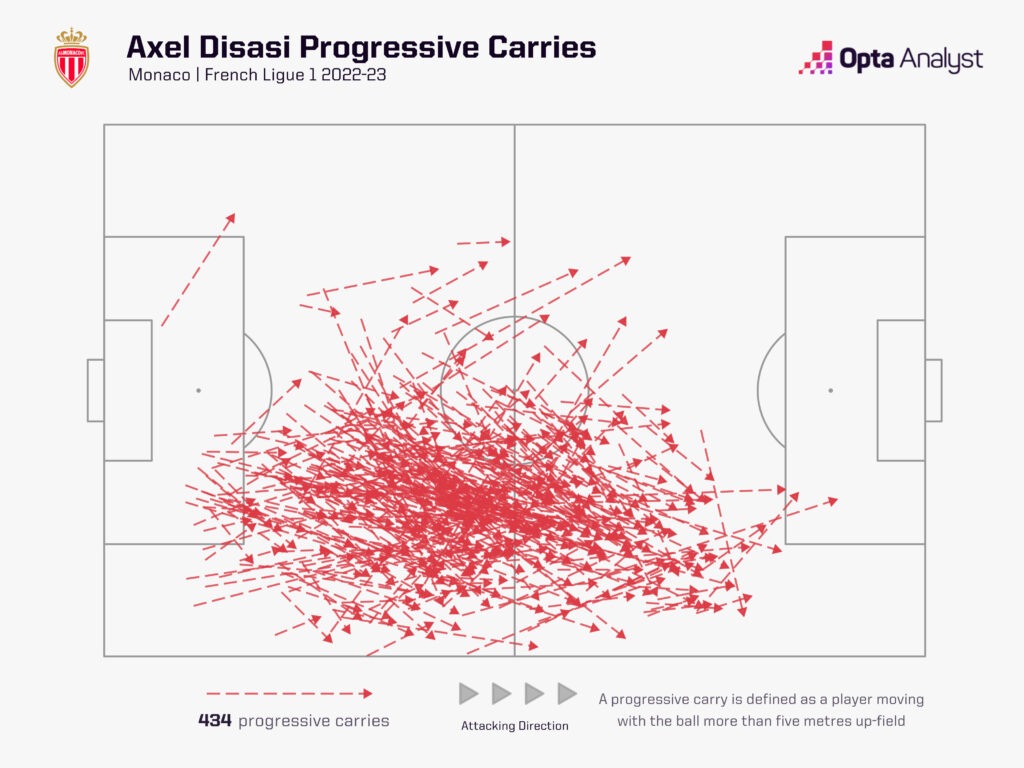
Not only is he comfortable on the ball, he’s confident and brave, happy to take on the responsibility for grabbing the game by the scruff of the neck when there aren’t necessarily inviting passing lanes open to him. Of course, it can be a risky approach against teams who press high, and he’ll encounter more of that in the Premier League, but Disasi’s skillset suggests he stands a better chance than many at adjusting to the increased pressure.
Some fans have expressed concern about Disasi’s speed, but the perception he’s exceptionally slow has been exaggerated. He may not be the most agile of players when it comes to turning and accelerating, which means he’s been known to have issues in one-v-one situations if isolated out wide, but he’s deceptively fast once he gets moving and is blessed with the kind of raw strength that can make up for shortcomings in speed in certain cases.
That strength and his height – being comfortably over six foot – also help make Disasi a real asset in the air. He contested the fifth most aerial duels (138) in Ligue 1 last season and won 97 of them, which was second only to Rasmus Nicolaisen (117). That equated to a success rate of 70.3%, which was the sixth best record of defenders to contest at least 65 aerials.
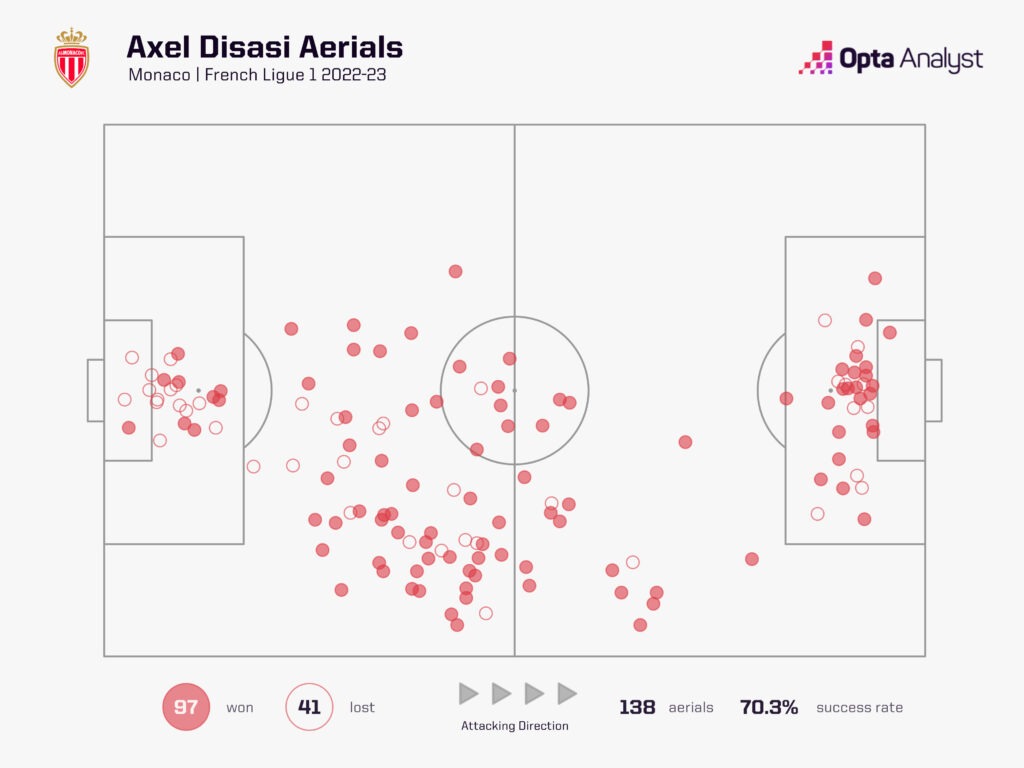
Disasi’s physical prowess manifests in some front-foot defending as well. He often likes to get right up behind the strikers he’s marking, confident in the knowledge he’ll likely be stronger than his opponent or be able to intercept the ball before it reaches its target. It’s an aggressive tactic that can be help spring quick transitions and counter-attacks, highlighting his ability to read the game, while it’s a good indicator that he’s not going to be intimidated by strikers of a certain disposition. Though it is also quite risky due to the space he vacates, so it may be a trait Pochettino will look to bring under control.
Granted, no combination of strengths will make any player a guaranteed success in the Premier League. There’s a reason it’s regarded the toughest and quickest domestic league in the world, and the quality only seems to get greater as every year passes. Plus, as we’ve noted, Chelsea haven’t exactly been an example in stability over the past year and a bit.
But Disasi’s wide range of abilities appear to make him ready-made for the Premier League. He’s a leader, technically very capable, has skills that lend to playing through a press, and he possesses physical prowess.
He may not be one of the more exciting or recognisable names to come through the revolving door at Stamford Bridge since Boehly took charge, but Disasi has attributes that could make him one of the best-value signings of Chelsea‘s new era so far if they’re attentive to his weaknesses.
Enjoy this? Subscribe to our mailing list to receive exclusive weekly content. And follow us on Twitter too.
